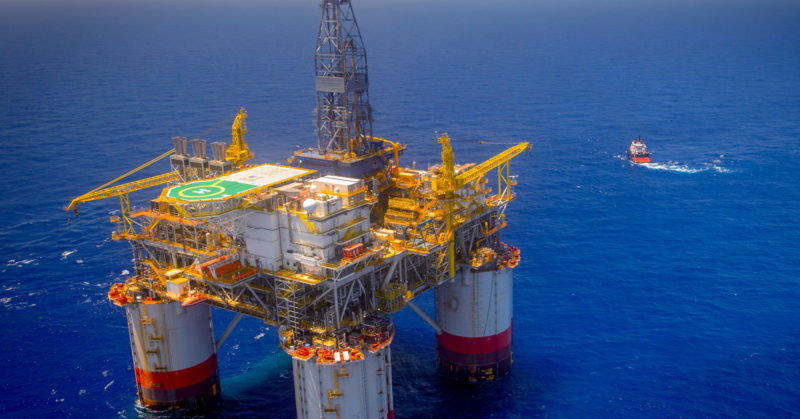Yesterday's Gulf of Mexico Lease Sale 252 generated $244 million in high bids for 227 tracts covering 1.26 million acres in federal waters of the Gulf. Thirty companies took part in the lease sale, submitting almost $284 million in total bids, Department of the Interior officials said.
The lease sale included 14,699 unleased blocks, located from three to 231 miles offshore, in the Gulf’s western, central and eastern planning areas in water depths ranging from 9' to more than 11,115' (three to 3,400 meters).
The following are excluded from the lease sale:
- Blocks subject to the congressional moratorium established by the Gulf of Mexico Energy Security Act of 2006;
- Blocks that are adjacent to or beyond the U.S. Exclusive Economic Zone in the area known as the northern portion of the Eastern Gap; and
- Whole blocks and partial blocks within the boundaries of the Flower Garden Banks National Marine Sanctuary.
The sale totals reflect a trend toward increased high bids from the lease sales over the last two years. Lease Sale 249 in 2017 saw $121 million in high bids, while Lease Sale 250 in 2018 attracted $124 million in high bids. Lease Sale 251, the last lease sale before Lease Sale 252, had $178 million in high bids.
“Today’s lease sale shows strong bidding by established companies, which indicates that the Gulf of Mexico will continue to be a leading energy source for our nation long into the future,” Interior assistant secretary Joe Balash said in a statement announcing the lease sale results. “The results from today will help secure well-paying offshore jobs, while generating much-needed revenue to fund everything from conservation to infrastructure.”
The Bureau of Ocean Energy Management (BOEM) has included fiscal terms that take into account market conditions and ensure taxpayers receive a fair return for use of the OCS. In recognition of current hydrocarbon price conditions and the marginal nature of remaining Gulf of Mexico shallow water resources, these terms include a 12.5% royalty rate for leases in less than 200 meters (656') of water depth, and a royalty rate of 18.75% for all other leases issued under the sale.
“Gulf of Mexico Lease Sale 252 allowed the federal government to check the temperature of the offshore industry in the U.S. Gulf of Mexico in the face of the slow pace of recovering commodity prices. Lease Sale 252 not only reflects the relatively stable oil prices, but also the efforts by the overall industry to cut costs,” Randall Luthi, president, National Ocean Industries Association, said in a statement. “Much of the cost cutting has drastically affected service companies, as their profit margin remains thin or non-existent. However, the trajectory of this and the past few sales shows stability and helps establish a new normal for the U.S. offshore industry. Companies continue to shore up existing development operations (in both shallow water and deepwater) in known geologic areas but are not yet ready for heavy investment in truly new deepwater projects.”
Luthi went on to say that Lease Sale 252 shows that the U.S. Gulf is still a fundamental basin for energy production and economic growth for the U.S. and underscores that the Gulf of Mexico is still the only offshore basin available in the U.S. in which U.S. companies may bid. “As the global offshore energy recovery heats up, the U.S. must recognize that we are not the only player at the offshore table. Other basins in the Western Hemisphere, including Guyana, Brazil and Mexico (not to mention onshore U.S. production) have become magnets for investment dollars,” he said.
Luthi referred to part I of a report by IHS Markit that he said confirms that the current federal fiscal structure has rendered the rate of return for U.S. offshore projects, particularly in deepwater areas, less attractive than rates of return in other regions. “Policymakers should take note and find new ways to attract and retain global investment dollars in the U.S. Gulf of Mexico, an area that has a long history as the gold standard of offshore energy production,” he said.
Commenting on the results, William Turner, senior research analyst at Wood Mackenzie, said, "We saw a modest increase in overall spend, but it was outpaced by the increase in acreage leading to lower amount per acre, furthering our hypothesis that it is a buyer’s market in the Gulf of Mexico.
According to Turner, the number of companies participating has thinned out, with the only notable absence being ExxonMobil, and it seems those left in the Gulf of Mexico are committed to the region and taking this opportunity to quietly strengthen their prospect inventory.
“One of the most interesting details of the sale were unique partnerships between majors and smaller players like Kosmos with Equinor, Fieldwood with Chevron, LLOG with BP and Talos with EcoPetrol. This demonstrates a shrinking pool of partners, but also an increased willingness of the majors to partner with these more nimble players,” said Turner. “Shell had the most bids and was the highest spender, but went at it alone, picking up acreage across the entire region.
The highest bid of the round, $24.5 million, came from Equinor.
All terms and conditions for Lease Sale 252 are detailed in the Final Notice of Sale information package.





